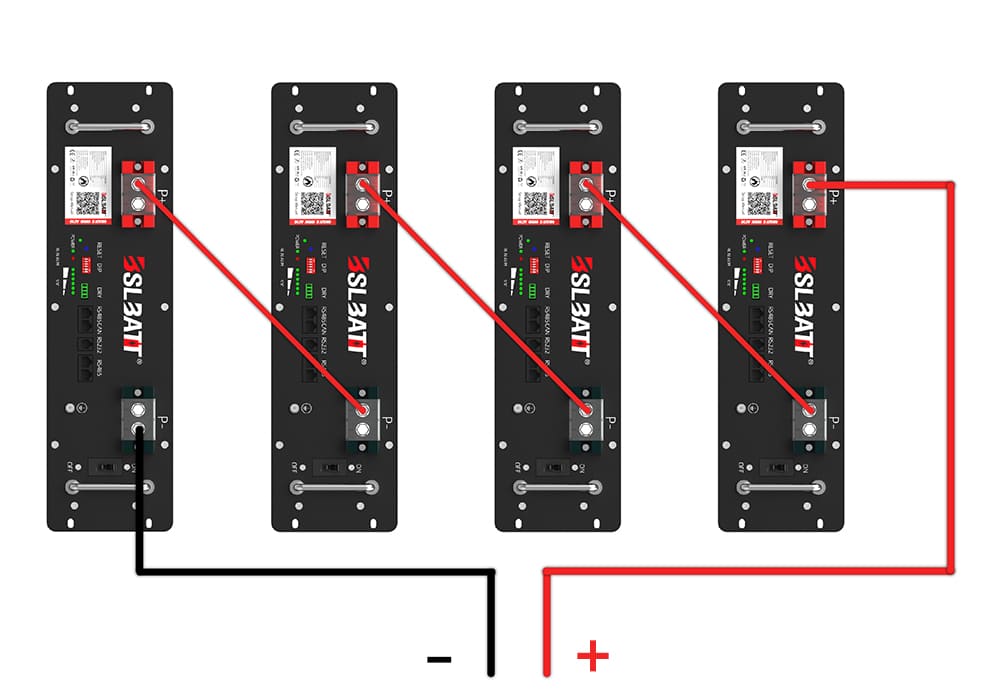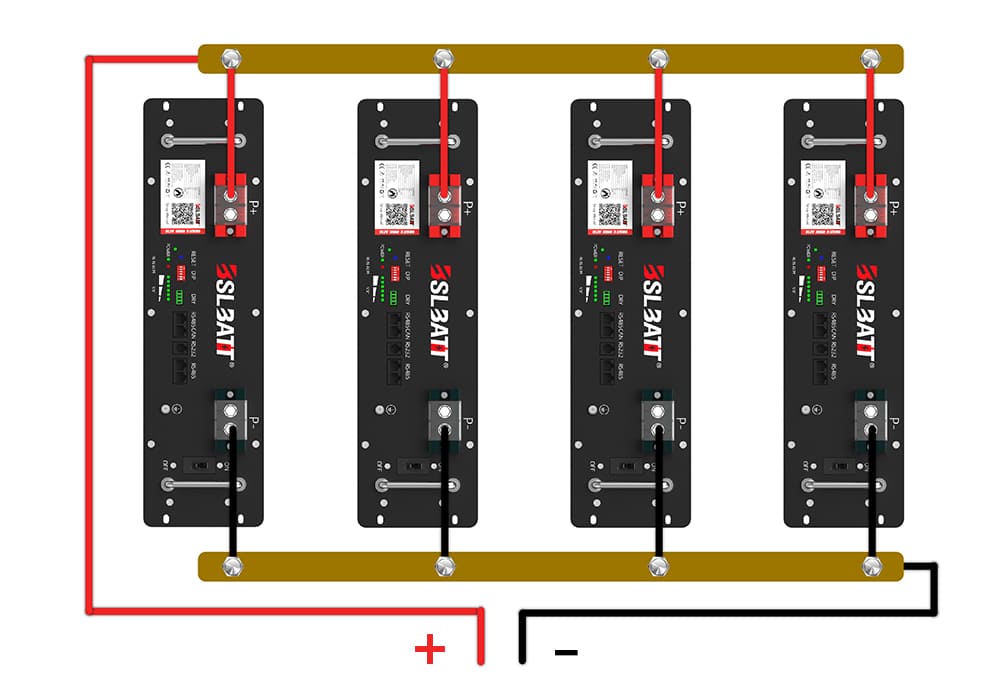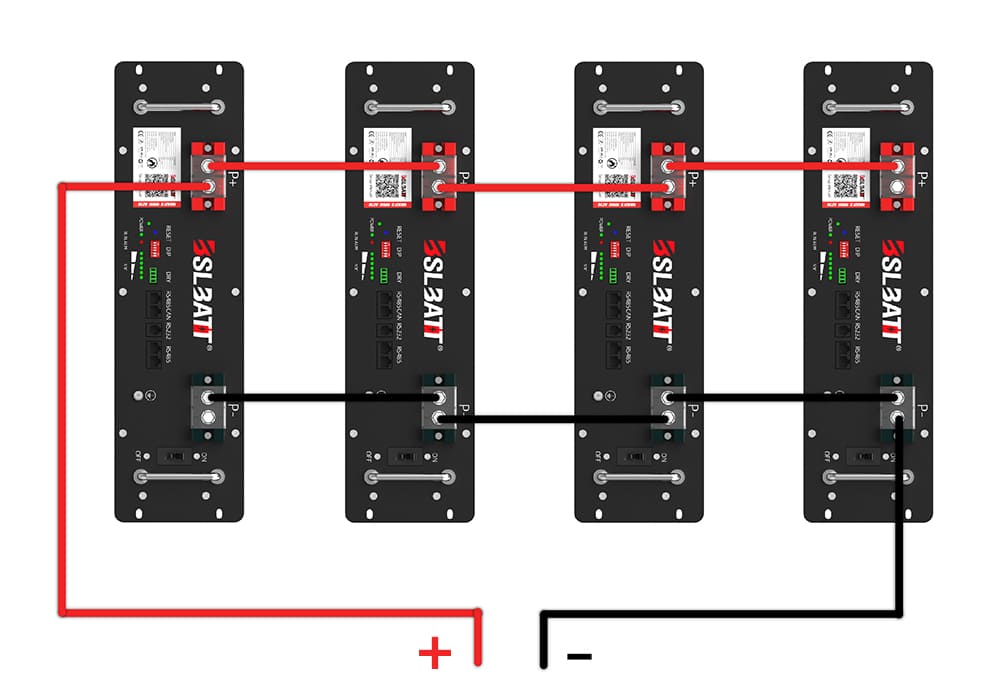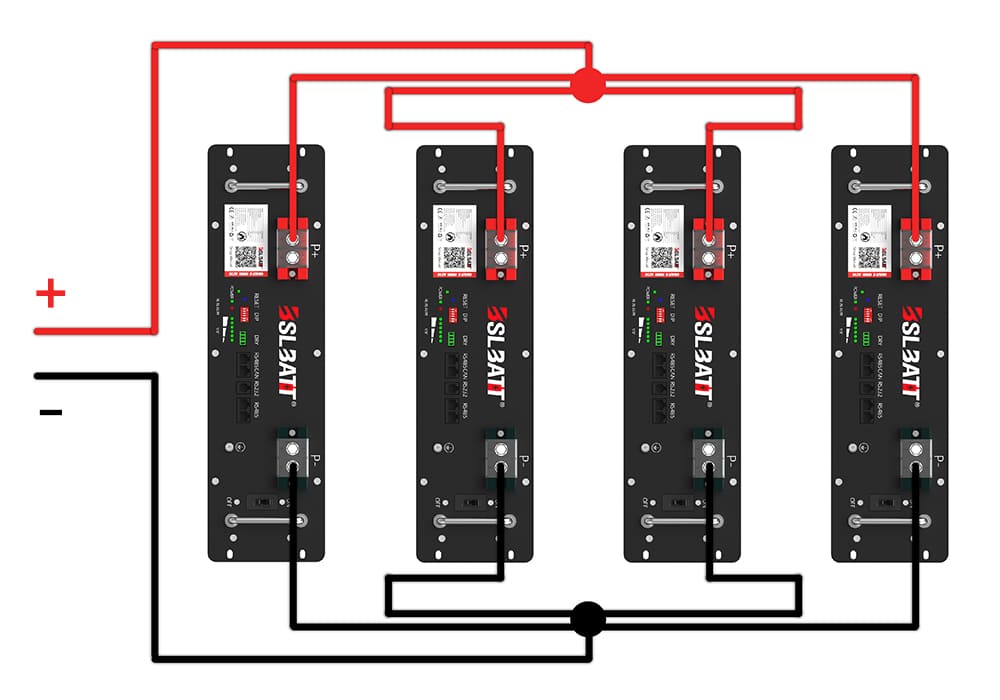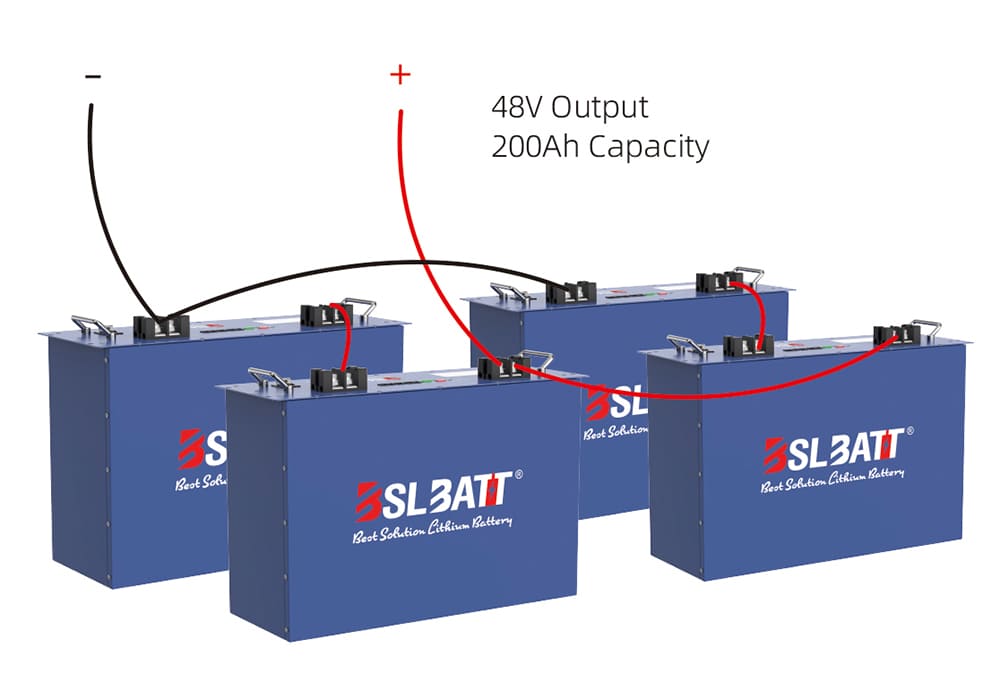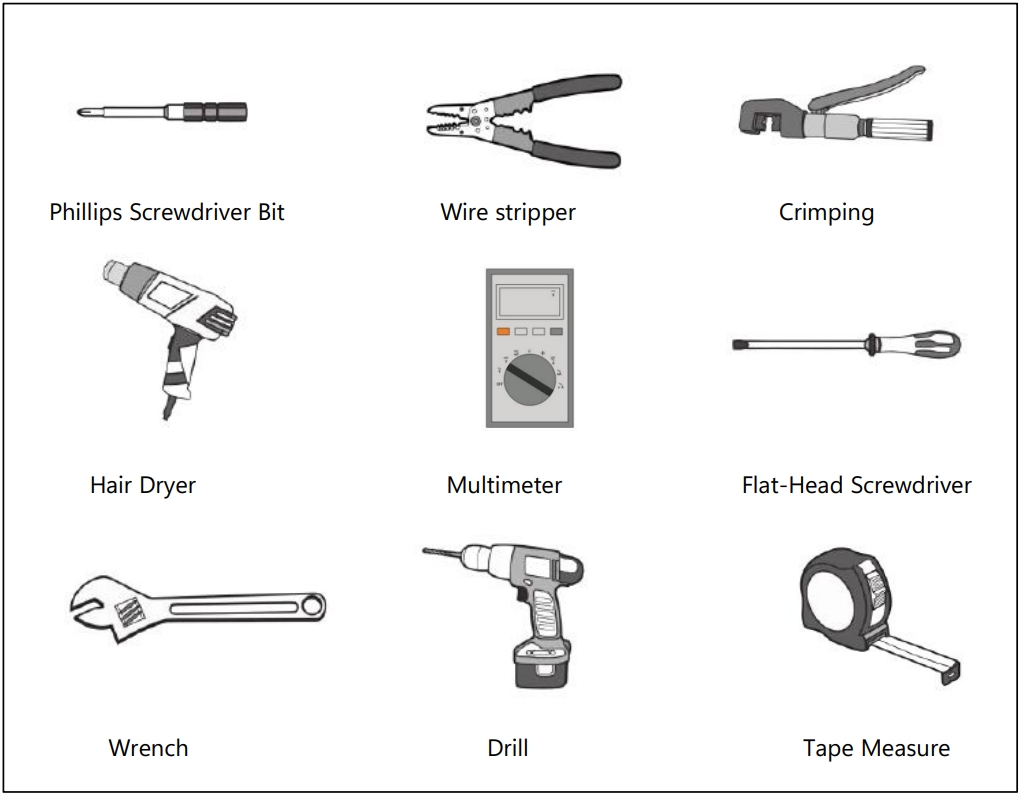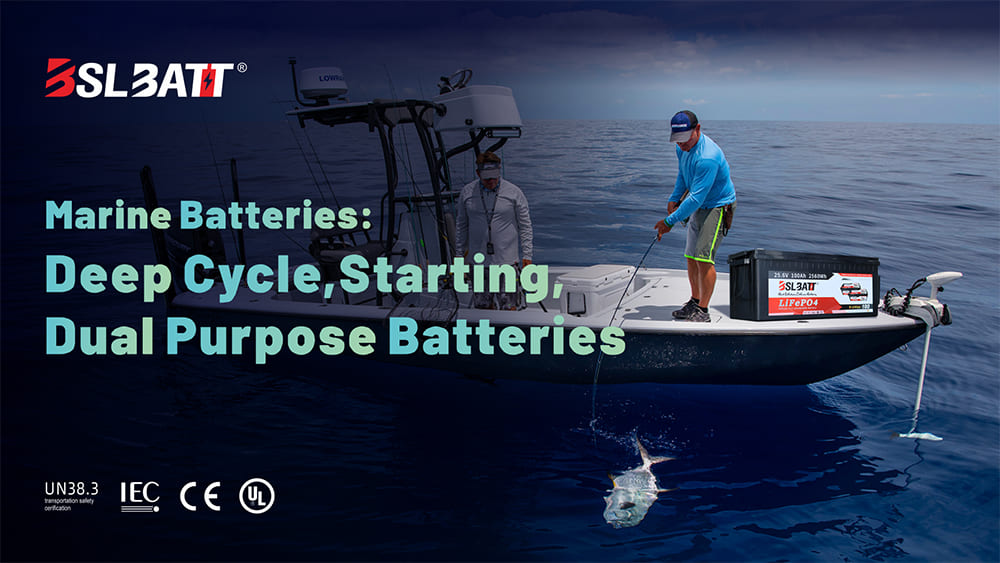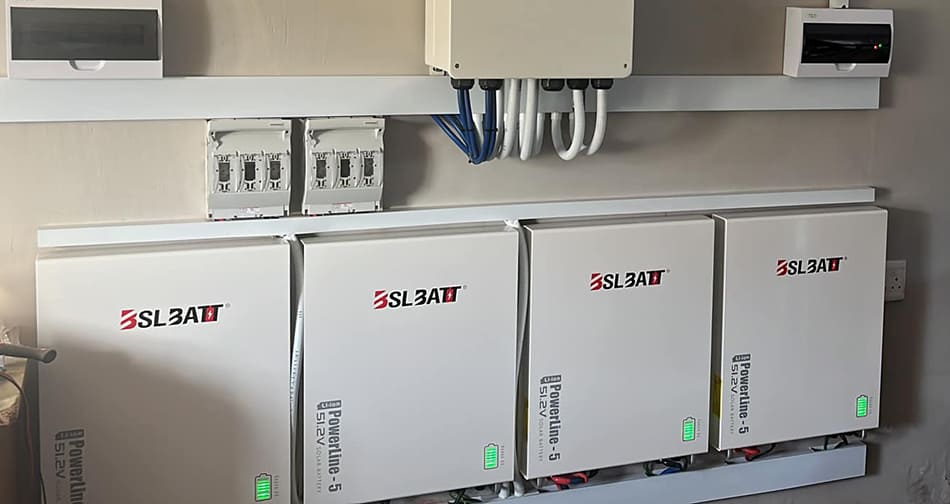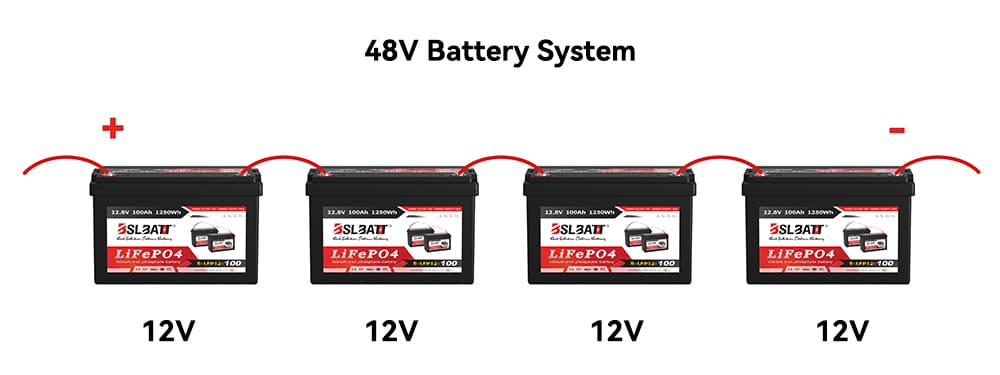As an engineer passionate about sustainable energy, I believe mastering battery connections is crucial for optimizing renewable systems. While series and parallel each have their place, I’m particularly excited about series-parallel combinations. These hybrid setups offer unparalleled flexibility, allowing us to fine-tune voltage and capacity for maximum efficiency. As we push towards a greener future, I expect to see more innovative battery configurations emerging, especially in residential and grid-scale energy storage. The key is to balance complexity with reliability, ensuring our battery systems are both powerful and dependable.
Imagine you’re setting up a solar power system for your off-grid cabin or building an electric vehicle from scratch. You’ve got your batteries ready, but now comes a crucial decision: how do you connect them? Should you wire them in series or parallel? This choice can make or break your project’s performance.
Batteries in series vs parallel—it’s a topic that confuses many DIY enthusiasts and even some professionals. Of course, this is one of the questions the BSLBATT team is often asked by our clients. But fear not! In this article, we’ll demystify these connection methods and help you understand when to use each one.
Did you know that wiring two 24V batteries in series gives you 48V, while connecting them in parallel keeps it at 12V but doubles the capacity? Or that parallel connections are ideal for solar systems, while series is often better for commercial energy storage? We’ll dive into all these details and more.
So whether you’re a weekend tinkerer or a seasoned engineer, read on to master the art of battery connections. By the end, you’ll be confidently wiring up batteries like a pro. Ready to boost your knowledge? Let’s get started!
Main Takeaways
- Series connections increase voltage, parallel connections increase capacity
- Series is good for high voltage needs, parallel for longer runtime
- Series-parallel combinations offer flexibility and efficiency
- Safety is crucial; use proper gear and match batteries
- Choose based on your specific voltage and capacity requirements
- Regular maintenance extends battery life in any configuration
- Advanced setups like series-parallel need careful management
- Consider factors like redundancy, charging, and system complexity
Understanding Battery Basics
Before we dive into the intricacies of series and parallel connections, let’s start with the fundamentals. What exactly are we dealing with when we talk about batteries?
A battery is essentially an electrochemical device that stores electrical energy in chemical form. But what are the key parameters we need to consider when working with batteries?
- Voltage: This is the electrical “pressure” that pushes electrons through a circuit. It’s measured in volts (V). A typical car battery, for instance, has a voltage of 12V.
- Amperage: This refers to the flow of electric charge and is measured in amperes (A). Think of it as the volume of electricity flowing through your circuit.
- Capacity: This is the amount of electrical charge a battery can store, usually measured in ampere-hours (Ah). For example, a 100Ah battery can theoretically provide 1 amp for 100 hours, or 100 amps for 1 hour.
Why might a single battery not be sufficient for some applications? Let’s consider a few scenarios:
- Voltage Requirements: Your device might need 24V, but you only have 12V batteries.
- Capacity Needs: A single battery might not last long enough for your off-grid solar system.
- Power Demands: Some applications require more current than a single battery can safely provide.
This is where connecting batteries in series or parallel comes into play. But how exactly do these connections differ? And when should you choose one over the other? Stay tuned as we explore these questions in the following sections.
Connecting Batteries in Series
How exactly does this work, and what are the pros and cons?
When we connect batteries in series, what happens to the voltage and capacity? Imagine you have two 12V 100Ah batteries. How would their voltage and capacity change if you wired them in series? Let’s break it down:
Voltage: 12V + 12V = 24V
Capacity: Remains at 100Ah
Interesting, right? The voltage doubles, but the capacity stays the same. This is the key characteristic of series connections.
So how do you actually wire batteries in series? Here’s a simple step-by-step guide:
1. Identify the positive (+) and negative (-) terminals on each battery
2. Connect the negative (-) terminal of the first battery to the positive (+) terminal of the second battery
3. The remaining positive (+) terminal of the first battery becomes your new positive (+) output
4. The remaining negative (-) terminal of the second battery becomes your new negative (-) output
But when should you choose a series connection over parallel? Here are some common applications:
- Commercial ESS: Many commercial energy storage systems use series connection to achieve higher voltages
- Home Solar systems: Series connections can help match inverter input requirements
- Golf carts: Most use 6V batteries in series to achieve 36V or 48V systems
What are the advantages of series connections?
- Higher voltage output: Ideal for high-power applications
- Reduced current flow: This means you can use thinner wires, saving on costs
- Improved efficiency: Higher voltages often mean less energy loss in transmission
However, series connections aren’t without drawbacks. What happens if one battery in the series fails? Unfortunately, it can bring down the entire system. This is one of the key differences between batteries in series vs parallel.
Are you starting to see how series connections might fit into your project? In the next section, we’ll explore parallel connections and see how they compare. Which do you think will be better for increasing run time—series or parallel?
Connecting Batteries in Parallel
Now that we’ve explored series connections, let’s turn our attention to parallel wiring. How does this method differ from series, and what unique benefits does it offer?
When we connect batteries in parallel, what happens to the voltage and capacity? Let’s use our two 12V 100Ah batteries again as an example:
Voltage: Remains at 12V
Capacity: 100Ah + 100Ah = 200Ah
Notice the difference? Unlike series connections, parallel wiring keeps the voltage constant but increases the capacity. This is the key distinction between batteries in series vs parallel.
So how do you wire batteries in parallel? Here’s a quick guide:
1. Identify the positive (+) and negative (-) terminals on each battery
2. Connect all positive (+) terminals together
3. Connect all negative (-) terminals together
4. Your output voltage will be the same as a single battery
BSLBATT provides 4 reasonable battery parallel connection methods, the specific operations are as follows:
BUSBARS
Halfway
Diagonally
Posts
When might you choose a parallel connection over series? Some common applications include:
- RV house batteries: Parallel connections increase runtime without changing system voltage
- Off-grid solar systems: More capacity means more energy storage for nighttime use
- Marine applications: Boats often use parallel batteries for extended use of onboard electronics
What are the advantages of parallel connections?
- Increased capacity: Longer runtime without changing voltage
- Redundancy: If one battery fails, others can still provide power
- Easier charging: You can use a standard charger for your battery type
But what about drawbacks? One potential issue is that weaker batteries can drain stronger ones in a parallel setup. This is why it’s crucial to use batteries of the same type, age, and capacity.
Are you starting to see how parallel connections might be useful in your projects? How do you think the choice between series and parallel might affect battery lifespan?
In our next section, we’ll directly compare series vs parallel connections. Which do you think will come out on top for your specific needs?
Comparing Series vs. Parallel Connections
Now that we’ve explored both series and parallel connections, let’s put them head-to-head. How do these two methods stack up against each other?
Voltage:
Series: Increases (e.g. 12V + 12V = 24V)
Parallel: Stays the same (e.g. 12V + 12V = 12V)
Capacity:
Series: Stays the same (e.g. 100Ah + 100Ah = 100Ah)
Parallel: Increases (e.g. 100Ah + 100Ah = 200Ah)
Current:
Series: Stays the same
Parallel: Increases
But which configuration should you choose for your project? Let’s break it down:
When to choose series:
- You need higher voltage (e.g. 24V or 48V systems)
- You want to reduce current flow for thinner wiring
- Your application requires higher voltage (e.g. many three phase solar systems)
When to choose parallel:
- You need more capacity/longer runtime
- You want to maintain your existing system voltage
- You require redundancy in case one battery fails
So, batteries in series vs parallel – which is better? The answer, as you’ve probably guessed, depends entirely on your specific needs. What’s your project? Which configuration do you think would work best? Tell our engineers your ideas.
Did you know that some setups use both series and parallel connections? For example, a 24V 200Ah system might use four 12V 100Ah batteries – two parallel sets of two batteries in series. This combines the benefits of both configurations.
Advanced Configurations: Series-Parallel Combinations
Ready to take your battery knowledge to the next level? Let’s explore some advanced configurations that combine the best of both worlds – series and parallel connections.
Have you ever wondered how large-scale battery banks in solar farms or electric vehicles manage to achieve both high voltage and high capacity? The answer lies in series-parallel combinations.
What exactly is a series-parallel combination? It’s exactly what it sounds like—a setup where some batteries are connected in series, and these series strings are then connected in parallel.
Let’s look at an example:
Imagine you have eight 12V 100Ah batteries. You could:
- Connect all eight in series for 96V 100Ah
- Connect all eight in parallel for 12V 800Ah
- Or… create two series strings of four batteries each (48V 100Ah), then connect these two strings in parallel
The result of option 3? A 48V 200Ah system. Notice how this combines the voltage increase of series connections with the capacity increase of parallel connections.
But why would you choose this more complex setup? Here are a few reasons:
- Flexibility: You can achieve a wider range of voltage/capacity combinations
- Redundancy: If one string fails, you still have power from the other
- Efficiency: You can optimize for both high voltage (efficiency) and high capacity (runtime)
Did you know that many high-voltage energy storage systems use a series-parallel combination? For example, the BSLBATT ESS-GRID HV PACK uses 3–12 57.6V 135Ah battery packs in series configuration, and then the groups are connected in parallel to achieve high voltage and improve conversion efficiency and storage capacity to meet large-scale energy storage needs.
So, when it comes to batteries in series vs parallel, sometimes the answer is “both”! But remember, with greater complexity comes greater responsibility. Series-parallel setups require careful balancing and management to ensure all batteries charge and discharge evenly.
What do you think? Could a series-parallel combination work for your project? Or maybe you prefer the simplicity of pure series or parallel.
In our next section, we’ll discuss some important safety considerations and best practices for both series and parallel connections. After all, working with batteries can be dangerous if not done correctly. Are you ready to learn how to stay safe while maximizing your battery setup’s performance?
Safety Considerations and Best Practices
Now that we’ve compared series and parallel connections, you might be wondering—is one safer than the other? Are there any precautions I should take when wiring batteries? Let’s explore these crucial safety considerations.
First and foremost, always remember that batteries store a lot of energy. Mishandling them can lead to short circuits, fires, or even explosions. So how can you stay safe?
When working with batteries in series or parallel:
1. Use proper safety gear: Wear insulated gloves and safety glasses
2. Use the right tools: Insulated wrenches can prevent accidental shorts
3. Disconnect batteries: Always disconnect batteries before working on connections
4. Match batteries: Use batteries of the same type, age, and capacity
5. Check connections: Ensure all connections are tight and corrosion-free
Best Practices for Series and Parallel Connection of Lithium Solar Batteries
To ensure the safe and efficient use of lithium batteries, it is essential to follow best practices when connecting them in series or parallel.
These practices include:
- Use batteries with the same capacity and voltage.
- Use batteries from the same battery manufacturer and batch.
- Use a battery management system (BMS) to monitor and balance the charge and discharge of the battery pack.
- Use a fuse or circuit breaker to protect the battery pack from overcurrent or overvoltage conditions.
- Use high-quality connectors and wiring to minimize resistance and heat generation.
- Avoid overcharging or over-discharging the battery pack, as this can cause damage or reduce its overall lifespan.
But what about specific safety concerns for series vs parallel connections?
For series connections:
Series connections increase voltage, potentially beyond safe levels. Did you know that voltages above 50V DC can be lethal? Always use proper insulation and handling techniques.
Use a voltmeter to verify total voltage before connecting to your system
For parallel connections:
Higher current capacity means increased risk of short circuits.
Higher current can lead to overheating if wires are undersized
Use fuses or circuit breakers on each parallel string for protection
Did you know that mixing old and new batteries can be dangerous in both series and parallel configurations? The older battery can reverse charge, potentially causing it to overheat or leak.
Thermal management:
Batteries in series can experience uneven heating. How do you prevent this? Regular monitoring and balancing are crucial.
Parallel connections distribute heat more evenly, but what if one battery overheats? It could trigger a chain reaction called thermal runaway.
What about charging? For batteries in series, you’ll need a charger that matches the total voltage. For parallel batteries, you can use a standard charger for that battery type, but it may take longer to charge due to increased capacity.
Did you know? According to the National Fire Protection Association, batteries were involved in an estimated 15,700 fires in the U.S. between 2014-2018. Proper safety precautions are not just important – they’re essential!
Remember, safety isn’t just about preventing accidents – it’s also about maximizing the life and performance of your batteries. Regular maintenance, proper charging, and avoiding deep discharges can all help extend battery life, whether you’re using series or parallel connections.
Conclusion: Making the Right Choice for Your Needs
We’ve explored the ins and outs of batteries in series vs parallel, but you might still be wondering: which configuration is right for me? Let’s wrap things up with some key takeaways to help you decide.
First, ask yourself: what’s your primary goal?
Need higher voltage? Series connections are your go-to option.
Looking for longer runtime? Parallel setups will serve you better.
But it’s not just about voltage and capacity, is it? Consider these factors:
- Application: Are you powering an RV or building a solar system?
- Space constraints: Do you have room for multiple batteries?
- Budget: Remember, different configurations may require specific equipment.
Did you know? According to a 2022 survey by the National Renewable Energy Laboratory, 40% of residential solar installations now include battery storage. Many of these systems use a combination of series and parallel connections to optimize performance.
Still unsure? Here’s a quick cheat sheet:
| Choose Series If | Go for Parallel When |
| You need higher voltage | Extended runtime is crucial |
| You’re working with high-power applications | You want system redundancy |
| Space is limited | You’re dealing with low-voltage devices |
Remember, there’s no one-size-fits-all solution when it comes to batteries in series vs parallel. The best choice depends on your specific needs and circumstances.
Have you considered a hybrid approach? Some advanced systems use series-parallel combinations to get the best of both worlds. Could this be the solution you’re looking for?
Ultimately, understanding the differences between batteries in series vs parallel empowers you to make informed decisions about your power setup. Whether you’re a DIY enthusiast or a professional installer, this knowledge is key to optimizing your battery system’s performance and longevity.
So, what’s your next move? Will you opt for the voltage boost of a series connection or the capacity increase of a parallel setup? Or perhaps you’ll explore a hybrid solution? Whatever you choose, remember to prioritize safety and consult with experts when in doubt.
Practical Applications: Series vs Parallel in Action
Now that we’ve delved into the theory, you might be wondering: how does this play out in real-world scenarios? Where can we see batteries in series vs parallel making a difference? Let’s explore some practical applications to bring these concepts to life.
Solar Power Systems:
Have you ever wondered how solar panels power entire homes? Many solar installations use a combination of series and parallel connections. Why? Series connections boost voltage to match inverter requirements, while parallel connections increase overall capacity for longer-lasting power. For example, a typical residential solar setup might use 4 strings of 10 panels in series, with those strings connected in parallel.
Electric Vehicles:
Did you know that the Tesla Model S uses up to 7,104 individual battery cells? These are arranged in both series and parallel to achieve the high voltage and capacity needed for long-range driving. The cells are grouped into modules, which are then connected in series to reach the required voltage.
Portable Electronics:
Ever noticed how your smartphone battery seems to last longer than your old flip phone? Modern devices often use parallel-connected lithium-ion cells to increase capacity without changing voltage. For instance, many laptops use 2-3 cells in parallel to extend battery life.
Off-grid Water Desalination:
Series and parallel battery setups are essential in off-grid water treatment. For example, in portable solar-powered desalination units, series connections boost voltage for high-pressure pumps in solar-powered desalination, while parallel setups extend battery life. This enables efficient, eco-friendly desalination—ideal for remote or emergency use.
Marine Applications:
Boats often face unique power challenges. How do they manage? Many use a combination of series and parallel connections. For example, a typical setup might include two 12V batteries in parallel for engine starting and house loads, with an additional 12V battery in series to provide 24V for certain equipment.
Industrial UPS Systems:
In critical environments like data centers, uninterruptible power supplies (UPS) are essential. These often employ large banks of batteries in series-parallel configurations. Why? This setup provides both the high voltage needed for efficient power conversion and the extended runtime required for system protection.
As we can see, the choice between batteries in series vs parallel isn’t just theoretical – it has real-world implications across various industries. Each application requires careful consideration of voltage, capacity, and overall system requirements.
Have you encountered any of these setups in your own experiences? Or perhaps you’ve seen other interesting applications of series vs parallel connections? Understanding these practical examples can help you make more informed decisions about your own battery configurations.
FAQ About Batteries in Series or Parallel
Q: Can I mix different types or brands of batteries in series or parallel?
A: It’s generally not recommended to mix different types or brands of batteries in series or parallel connections. Doing so can lead to imbalances in voltage, capacity, and internal resistance, which may result in poor performance, reduced lifespan, or even safety hazards.
Batteries in a series or parallel configuration should be of the same type, capacity, and age for optimal performance and longevity. If you must replace a battery in an existing setup, it’s best to replace all batteries in the system to ensure consistency. Always consult with a professional if you’re unsure about mixing batteries or need to make changes to your battery configuration.
Q: How do I calculate the total voltage and capacity of batteries in series vs parallel?
A: For batteries in series, the total voltage is the sum of individual battery voltages, while the capacity remains the same as a single battery. For example, two 12V 100Ah batteries in series would yield 24V 100Ah. In parallel connections, the voltage remains the same as a single battery, but the capacity is the sum of individual battery capacities. Using the same example, two 12V 100Ah batteries in parallel would result in 12V 200Ah.
To calculate, simply add voltages for series connections and add capacities for parallel connections. Remember, these calculations assume ideal conditions and identical batteries. In practice, factors like battery condition and internal resistance can affect the actual output.
Q: Is it possible to combine series and parallel connections in the same battery bank?
A: Yes, it’s possible and often beneficial to combine series and parallel connections in a single battery bank. This configuration, known as series-parallel, allows you to increase both voltage and capacity simultaneously. For instance, you could have two pairs of 12V batteries connected in series (to create 24V), and then connect these two 24V pairs in parallel to double the capacity.
This approach is commonly used in larger systems like solar installations or electric vehicles where both high voltage and high capacity are required. However, series-parallel configurations can be more complex to manage and require careful balancing. It’s crucial to ensure all batteries are identical and to use a battery management system (BMS) to monitor and balance the cells effectively.
Q: How does temperature affect series vs parallel battery performance?
A: Temperature affects all batteries similarly, regardless of connection. Extreme temperatures can reduce performance and lifespan.
Q: Can BSLBATT Batteries be Connected in Series or Parallel?
A: Our standard ESS batteries can be run in series or parallel, but this is specific to the battery’s use scenario, and series is more complex than parallel, so if you are purchasing a BSLBATT battery for a larger application, our engineering team will design a viable solution for your specific application, in addition to adding a combiner box and high voltage box throughout the system in series!
For wall mounted batteries:
Can support up to 32 identical batteries in parallel
For rack mounted batteries:
Can support up to 63 identical batteries in parallel
Q: Series or parallel, which is more efficient?
In general, series connections are more efficient for high-power applications due to lower current flow. However, parallel connections can be more efficient for low-power, long-duration uses.
Q: Which battery last longer series or parallel?
In terms of battery duration, parallel connection will have a longer last life because the ampere number of the battery is increased. For example, two 51.2V 100Ah batteries connected in parallel form a 51.2V 200Ah system.
In terms of battery service life, series connection will have a longer service life because the voltage of the series system increases, the current remains unchanged, and the same power output generates less heat, thereby increasing the service life of the battery.
Q: Can you charge two batteries in parallel with one charger?
Yes, but the prerequisite is that the two batteries connected in parallel must be produced by the same battery manufacturer, and the battery specifications and BMS are the same. Before connecting in parallel, you need to charge the two batteries to the same voltage level.
Q: Should RV batteries be in series or parallel?
RV batteries are usually designed to achieve energy independence, so they need to provide sufficient power support in outdoor situations, and are usually connected in parallel to obtain more capacity.
Q: What happens if you connect two non-identical batteries in parallel?
Connecting two batteries of different specifications in parallel is very dangerous and may cause the batteries to explode. If the voltages of the batteries are different, the current of the higher voltage battery will charge the lower voltage end, which will eventually cause the lower voltage battery to over-current, overheat, damage, or even explode.
Q: How to connect 8 12V batteries to make 48V?
To make a 48V battery using 8 12V batteries, you can consider connecting them in series. The specific operation is shown in the figure below:
Post time: May-08-2024









